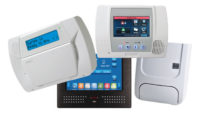There are no flashy changes or broad shifts to be found in the fire alarm market in 2012. In fact, in a lot of ways, the 2012 fire alarm market looks very similar to the 2011 market. Despite a lack of healthy construction in the commercial space, the industry continues to move forward — supported by code requirements, mandatory inspections, insurance incentives, and the simple unremitting need for life safety. There’s still business to be found because “an ounce of prevention is worth a pound of cure,” as Benjamin Franklin famously wrote in an anonymous letter addressing fire safety.
With Franklin’s principle in mind, 2012 offers continued codes updates and new technologies aimed at better detection and prevention and fewer false alarms. Overall, a close look also reveals an industry moving forward with steady changes, sustained technology advancements, and real growth opportunities.
The fire alarm industry is tied to the commercial building market, which has not been positive. Many industries continue to wait for it to recover. Between November 2010 and November 2011 spending on nonresidential construction projects (buildings as well as public works projects) declined by almost 3 percent, according to the American Institute of Architects’ (AIA) Architecture Billings Index released in February 2012. That may be crippling for some industries, but retrofits, upgrades, mandatory maintenance and enforced regulations keep the fire industry pressing forward.
That is why revenue at Fire Protection Inc., Seattle, is 97 percent from fire — on purpose — according to president and chief executive officer Roy Cats.
“The one thing that has changed in the 30-plus years I’ve been in the industry is that now fire is considered a requirement, not a luxury that would be nice to have. Safety requirements, insurance requirements, jurisdiction and code requirements — I would rather sell a fire system over a security system all day long because a fire system is required to be in business, while an alarm system is not,” Cats explains.
New construction does show improvement. One indicator of where the construction market is headed is the AIA’s Architecture Billings Index. Because design work precedes construction, the index is a predictor of future construction activity. The most recent Architecture Billings Index report shows rising inquiries (for proposed projects) and work on hand (billings) at architectural firms. In February, the index showed the demand for architects to design new projects in the United States had reached its highest point in nearly five years.
The AIA also publishes the AIA Consensus Construction Forecast, which predicts a 2 percent growth rate for 2012 for nonresidential spending for buildings. The consensus also predicts 2013 to grow 6.4 percent over 2012 levels.
“The fire industry follows that AIA Billings Index, lagging maybe six months behind. So the recent numbers are a positive indication that the construction market is slowly starting to take off. Regionally it looks like the Midwest, the Northeast and the South are all seeing positive growth, while the West is still struggling a bit. Still, the commercial and industrial sectors are leading the way, which is good for the fire industry and will make a difference this year,” says Susan Adam, marketing director, Silent Knight by Honeywell, Maple Grove, Minn.
Business is growing, reports Don Johnson, Camtek Inc., Spokane, Wash., a Select Silent Knight Farenhyt dealer. “In 2011, it seemed like we were doing more budgeting and bidding and 'hopeful' work, but in 2012, there is a lot more actual business,” he says.
Paul Stoupa, director of National Accounts, Edwards, Bradenton, Fla., expects to see more projects in the private sector, but not as many in the public sector.
“In the private sector there seems to be ‘pent up’ demand. Many projects that were planned in 2011 and prior years were never released due to the business climate and the freeze of funding for these projects. 2012 seems to be providing a bit more optimism and the release of project funding. But in the public sector, much of the stimulus dollars released in 2009 have been spent. There is significantly less project and grant money available than in prior years due to significant 2012 and projected 2013 budget cutbacks. These cutbacks have had a trickle-down impact at the state and local levels. Public sector spending will continue to be tight as the government wrestles with deficits, leaving less funding for projects such as fire and mass notification,” Stoupa predicts.
Whether privately or publicly funded, Gary Rowe, sales executive, shares that Affiliated Systems, Downers Grove, Ill., a Gamewell-FCI dealer and U.L.-listed service company, hasn’t seen new construction come back in its region yet. Renovations are 80 percent of Affiliated Systems’ new sales.
“Going out to existing end users to win the retrofit jobs is something we’ve had to focus on this year instead of new construction jobs. We’re not projecting a lot of growth this year, but we’re able to sustain,” Rowe shares.
Established in 1983, Affiliated has been providing fire alarm service for more than two decades to more than 5,000 facilities in and near Chicago.
SMG Security Systems, Elk Grove Village, Ill., also operates in the Chicagoland area. SMG is an authorized distributor for Silent Knight Fire Alarm Systems, Honeywell Fire Alarm Systems, and FireLite Fire Systems. Steve Wehofer, sales manager, reports that retrofits are also the most promising area this year for SMG.
“In years past it has been a lot of new construction, but now people are doing more build-outs and rehab work. Last year we did a lot of bid work, but it was a waste of time. We didn’t make money on those jobs. This year, we’re taking care of existing customers. It is quality work and more guaranteed. We do a lot of work with the property management and developers, bringing fire alarms and buildings up to code,” Wehofer describes.
Bringing buildings ‘up to code’ is major part of the fire industry and only continues to grow in 2012 as more ordinances are passed specifically addressing the issue. Around the country there are a wide range of ordinances determining exactly when a building must be brought up to code. In the state of Washington, out of 315 city jurisdictions, Cats shares that more and more every month are passing ordinances stating that a building must be brought into compliance with today’s standards when it changes ownership.
“We did work on a hotel in downtown Tacoma that was built in 1910 that had just changed ownership. It had no sprinklers, no system, just fire escapes. We did an entire sprinkler system, detection system — everything, basically — to bring it up to codes and standards. Every building that sells is in essence a brand new building for us,” he explains.
With the new ordinances and a high level of new construction in the Pacific Northwest, Cats says he will be surprised if revenue doesn’t increase 20 percent or more in 2012.
In addition to adding ordinances, jurisdictions are doing a better job this year enforcing existing testing and maintenance requirements, Johnson reports. “They don’t want to respond to false alarms, so they are enforcing that systems be better maintained than they have been in the past,” he says.
False alarms continue driving technology advancements in detection.
“Smoke detection and pull stations have advanced in the last few years with a focus on reducing false alarms,” Cats reports. “No one wants false alarms in the fire industry. No one wants a hotel emptying out on a Friday night and losing thousands and thousands of dollars. One very good example: We do a lot of work for Microsoft, and it informed us that to evacuate one five-story building (there are multiple five-story buildings on its campus) based on a false alarm costs $95,000 dollars. The figure is a great tool for us to go to a location and say, “Look, you may not feel like upgrading your system to have better detection for $25,000, but one fewer false alarm this year will instantly pay for the upgrade.”
NFPA 72
Installers will need to begin learning a new NFPA 72 soon. The 2013 version of the NFPA 72 National Fire Alarm & Signaling Code is expected to be finalized at a Technical Meeting at the NFPA Annual Conference in June 2012; available by September 2012; and fully published in early 2013.
Lee Richardson, staff liaison for NFPA 72, National Fire Protection Association (NFPA), Quincy, Mass., explains some of the changes to be found in the new code.
“The 2010 edition of code was a major, major revision to the code — I would even call it ‘landmark.’ We completely reorganized the document, and we added new chapters on emergency communications and mass notifications, which was a driver for reorganizing the document. In the 2013 edition we are building on that overall new organization. A key focus for the new code was usability and eliminating the pain points of working through the document.
“For example, one new chapter in 2013 edition compiles all the documentation requirements of NFPA 72 into a single chapter so they are easier to find.
“Also in the 2010 edition, because of mass notification addition, the testing and maintenance form was expanded so it was 12 to 13 pages long, but a lot of it didn’t apply to an ordinary fire alarm system and people thought it was cumbersome. Now it is repackaged. If you only have a fire alarm, you use certain pieces and then you add more forms as you add more pieces to the system.
“In 2013, they’re also adding an inspection table; before there was just a table on the frequency of inspection, but not a method on how to inspect.
“The chapter on requirements for signaling to supervising stations has also been revised. There has been quite a bit of change in the code about getting signal from the premises to the supervising station, and a lot of that is technology driven. For years and years, the predominate method (relatively speaking) of communication was the digital alarm communicator system. Today the phone companies are not putting in copper telephone line anymore and are doing more things through cable and Internet protocol (IP)-type systems. The committee tried to make provisions in the code for these new systems,” Richardson explains.
There are many choices to make outside of POTS. “As the transition away from POTS is moving forward, more and more dealers are adapting to new solutions that allow communication to the fire panel including IP, GSM radio and cellular technologies,” says Andy Morra, vice president, Marketing, ADI, Melville, N.Y.
SMG is using a wireless network for monitoring, another communication option. “We’re focused on moving people off phone lines and onto the mesh network. With the wireless mesh networks such as the one offered by AES-IntelliNet, we’re in control of our own destiny. We own the network,” Wehofer says.
Others are drawn to IP by its potential cost savings.
“It doesn’t sound like new technology to use IP instead of a telephone line, but the fire alarm industry is so slow to adopt new technology that the trend is still ‘new’ this year,” Adam comments. “The growth in IP or cellular is driven by cost savings that happen when you replace the POTS lines and go from two phones lines to one IP line. The technology is moving along and people are interested, but it is not moving along as fast as you would expect. A sense of caution regarding the adoption of new technology like IP is very prevalent and continues in 2012,” Adam observes.
Others aren’t as cautious, remaining excited about IP’s service potential. “IP is the key to the future of our fire offering. As a security integrator with a services-based approach, we know IP will help enable the advanced services that set us apart from other security providers. We have the potential to greatly enhance the way we manage and maintain fire detection solutions when we can do things like remotely monitor the health of fire extinguishers,” says Michael Dowling, director, Fire Detection Solutions and Services, Diebold Inc., North Canton, Ohio.
In addition to service, Mike Duncan, vice president of Sales, Security Solutions, Communications Supply Corporation (CSC), Carol Stream, Ill., lists information as a key benefit of IP that will boost the industry this year. “The fire industry is seeing movement toward IP devices because the same advantages that video and access control have experienced are also found in the fire industry. IP infrastructure allows you to begin running information over a network. Availability of information can be a powerful tool for a company,” Duncan says.
The fire industry needs to step up its game and supply a higher quality of reputable information with its life safety systems, says Jay Cohen, director, Engineering & Application Development, VES Fire Detection Systems, King of Prussia, Pa. Taktis, a new concept in life safety system management coming from Kentec Electronics Ltd. (VES’ parent company), is more than a fire detection and alarm system. It is flexible enough to be re-configured to realize many other control and indication applications, with direct integration into intelligent buildings. Taktis also will offer software tools to remotely access and manage the system using intelligent analysis of data collected from those systems. The remote management features are designed to reduce fault call outs, improve servicing, allow more effective maintenance, reduce unwanted alarms or false alarms, and improve overall service to the end user.
“A driver of technology advancements is information — specifically verifiable information — and the ability to obtain it in an easy manner is what people are looking for today,” Cohen shares.
In short, fire alarm systems must do more than detect fire.
“We are seeing more complete systems, including life safety solutions, being installed. In addition to the primary products, we are selling all the peripherals that go along with the system like covers and surge protection. The value of expanding a more complete solution tied to customer needs is taking root,” Morra observes.
“The realization that fire alarms are no longer just pull stations, smokes and bells but can be used for things such as gas detection and building emergency notification systems is a huge technology boost and revenue opportunity,” Johnson says.
One key expansion of the fire system remains mass notification, which is also maturing to embrace convergence.
Mass Communications
We’re seeing mass notification systems (MNS) evolve and there’s a continued convergence happening. I give AHJs credit for seeing that mass notification cannot rely on a single way to get in touch with someone. The fire system is in the mix, but AHJs are now accepting other means of notifying people. Having a multi-modal system is key. You are not going to notify someone of an emergency by only one means. As an industry we are making people safer when we don’t limit ourselves to only the fire alarm system,” says Jeff Klein, vice president of Marketing, System Sensor, St. Charles, Ill.
Instead, an effective system today may involve indoor speakers, “giant voice” speakers outdoors, text messaging, computer pop-ups, LED/LCD signage, social media, email, smartphones and even Sirius radio.
It is all about managing the message.
“MNS functionally can be described as message management. It is important to manage messaging in large areas or at an enterprise level and choose solutions that enable the user to leverage any communication infrastructure that is currently installed. The three tenants of MNS (indoor notification, wide area and distributed recipient MNS) use different message transport methods and infrastructure. Our platform is an IP topology that allows segments or devices to be connected and managed interchangeably between wired and wireless systems whether LAN or WAN systems. This strategy has always been to allow the user to leverage the installed systems and infrastructure they already have. This makes interoperability the key to a complete MNS system,” says Ted Milburn, vice president of Marketing, Cooper Notification, Long Branch, N.J.
For a more detailed examination of the growing “layered” approach to mass notification, read “Many Options Lead to Layered Approach for Emergency Communications” on page 91.
Carbon Monoxide
“CO detection continues to see more support through legislation. In 2012, The Security Industry Association (SIA), in conjunction with several other groups, is supporting bipartisan legislation to increase the use of residential carbon monoxide alarms. The bill sets up a grant program to encourage states to enact a rule or law requiring all dwelling units and apartment buildings to have carbon monoxide alarms.
The key is keeping up with the new legislation, something System Sensor is helping dealers do via a new interactive map. See “Shortcut to CO” on page 60.
System Sensor’s David George, director, Marketing Communications, says 36 states have CO legislation in some form. In addition to residential legislation, more CO detection is being mandated in commercial buildings. Read “CO Detection Requirements on the Rise” on page 103.
New CO legislation, ordinances mandating bringing fire alarm systems up-to-code with building retrofits or new ownership, advancing technologies creating less false alarms and more information, and possible growth in new construction: With a closer look, there is a lot that may well lead to a 2012 that looks very different from 2011 in the end. In the meantime, the industry doesn’t need flashy changes or broad shifts to grow and succeed. It just needs good service.
“As long as the service we provide is good, businesses will write us a check each month,” Cats says, reminding us that if the fire alarm industry keeps offering that invaluable “ounce of prevention,” then the money will follow.






